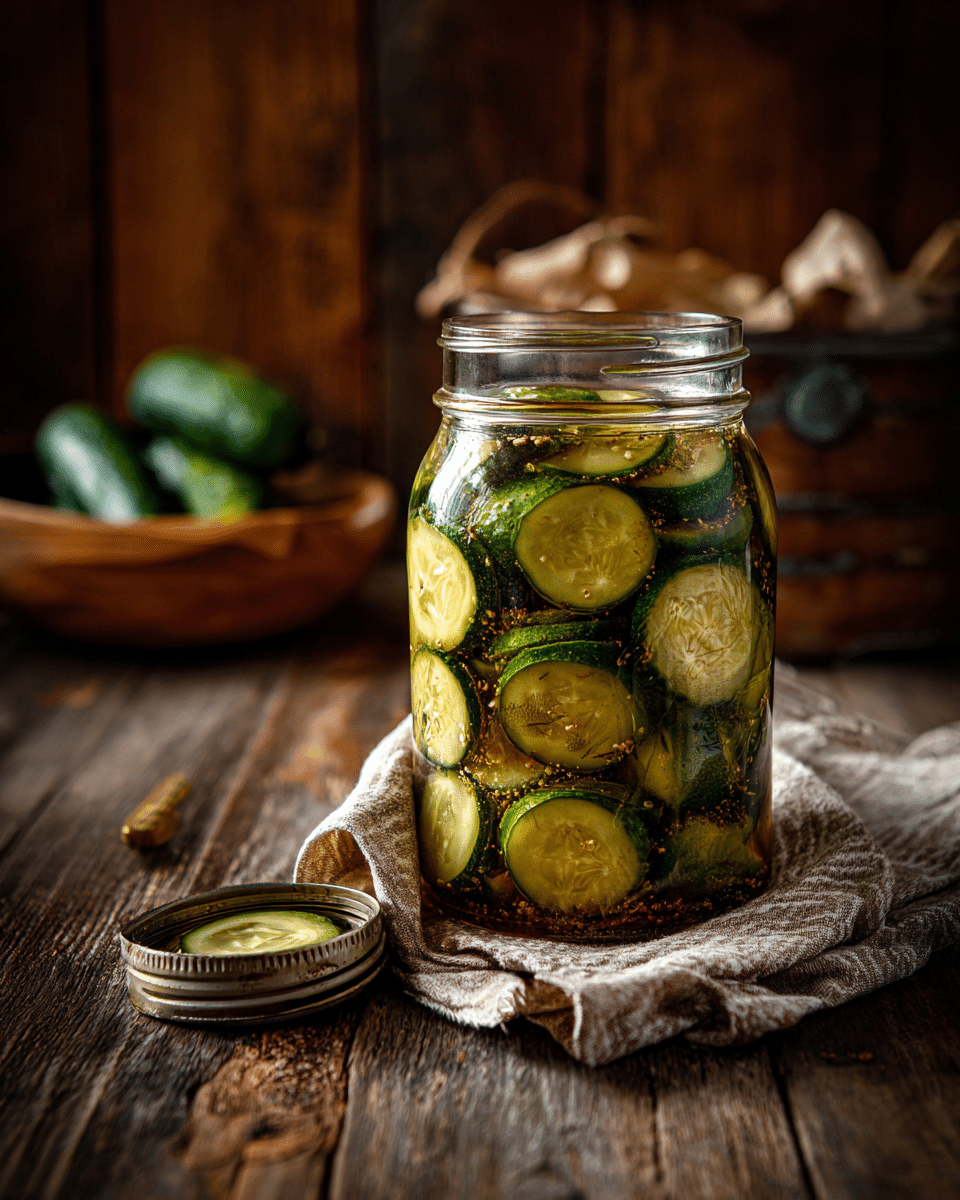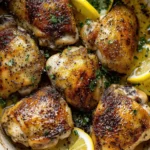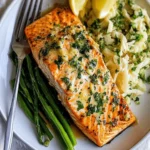Old-Fashioned Bread and Butter Pickles are a cherished staple in home canning traditions. With their perfect balance of sweet and tangy flavor, these pickles are a delightful accompaniment to sandwiches, burgers, and cheese boards. This classic recipe uses cucumbers, onions, and a seasoned vinegar brine to create the nostalgic crunch and flavor found in grandma’s pantry.
FULL RECIPE
Ingredients
- 4 cups sliced pickling cucumbers (about 4–5 small cucumbers)
- 1 1/2 cups thinly sliced onions
- 1/4 cup kosher salt
- 2 cups white vinegar
- 1 cup granulated sugar
- 1/2 teaspoon turmeric
- 1/2 teaspoon celery seed
- 1 tablespoon mustard seeds
- 1/4 teaspoon ground cloves (optional)
- Ice cubes (for soaking)
- Water (for rinsing and soaking)
Directions
- In a large non-reactive bowl, combine the sliced cucumbers and onions. Sprinkle with kosher salt and toss to coat evenly.
- Cover the vegetables with a layer of ice cubes and cold water. Let sit for 2 hours to draw out excess moisture. After soaking, drain well and rinse thoroughly under cold water. Set aside to drain completely.
- In a large non-reactive saucepan, combine the vinegar, sugar, turmeric, celery seed, mustard seeds, and cloves (if using). Bring the mixture to a boil over medium-high heat, stirring to dissolve the sugar.
- Add the drained cucumbers and onions to the hot brine. Return to a gentle boil and cook for 5 minutes, stirring occasionally.
- Using a slotted spoon, pack the hot vegetables into sterilized canning jars, leaving 1/2 inch headspace. Pour the hot brine over the vegetables, maintaining the same headspace.
- Wipe the rims of the jars clean, then apply sterilized lids and screw on bands until fingertip-tight.
- Process the jars in a boiling water bath for 10 minutes (adjusting for altitude if necessary).
- Carefully remove jars and let cool undisturbed for 12–24 hours. Check seals and refrigerate any unsealed jars.
- Allow pickles to cure for at least 1 week before opening for best flavor.
Nutrition Facts
- Calories: 60
- Total Fat: 0g
- Saturated Fat: 0g
- Trans Fat: 0g
- Cholesterol: 0mg
- Sodium: 430mg
- Total Carbohydrates: 15g
- Dietary Fiber: 1g
- Sugars: 13g
- Protein: 0g
- Vitamin C: 4% DV
- Iron: 2% DV
- Calcium: 2% DV
The History of Bread and Butter Pickles
Bread and butter pickles have a rich heritage rooted in American home cooking, dating back to the early 20th century. The name “bread and butter” is believed to come from the pickles’ role as a simple, everyday accompaniment to basic meals like bread and butter sandwiches. Originally popularized as a way to preserve the summer cucumber harvest, this sweet and tangy pickle quickly became a pantry staple in many households, symbolizing thrift, tradition, and the comforting flavors of homemade food.
The Flavor Profile and What Makes It Unique
What sets bread and butter pickles apart is their distinctive balance of sweetness and acidity. Unlike dill pickles, which focus on tart and salty notes, bread and butter pickles combine sugar with vinegar and a mix of aromatic spices such as mustard seed and celery seed. This blend results in a mellow, slightly sweet flavor with a gentle tang, enhanced by the crunchy texture of the cucumbers and the subtle bite of thinly sliced onions.
Health Benefits of Bread and Butter Pickles
Though often considered a condiment, bread and butter pickles offer several nutritional benefits. Cucumbers provide hydration and a small amount of fiber, while the vinegar used in pickling has been studied for its potential benefits in regulating blood sugar and improving digestion. However, due to the sugar content in this particular recipe, they should be enjoyed in moderation, especially for those monitoring blood sugar levels.
Common Variations to Try at Home
The classic bread and butter pickle recipe can be adapted in many ways to suit personal taste or dietary needs. Some people like to reduce the sugar or substitute with natural sweeteners like honey or maple syrup. Others add spices like cinnamon sticks, cloves, or chili flakes for a spicier or more complex flavor. Experimenting with different types of vinegar—such as apple cider vinegar—can also introduce subtle flavor changes and unique notes to the pickles.
Serving Suggestions and Culinary Pairings
Bread and butter pickles shine as a versatile condiment, perfect for adding brightness and crunch to sandwiches, burgers, and hot dogs. They also pair wonderfully with rich, fatty foods such as fried chicken or pork, where their acidity cuts through the heaviness. Beyond classic uses, these pickles can be chopped and mixed into potato salads, coleslaw, or even used as a tangy topping for creamy cheeses or charcuterie boards.
Storage Tips and Shelf Life
Proper storage is essential to maintain the crispness and flavor of bread and butter pickles. When canned using a water bath method, sealed jars can be stored in a cool, dark place for up to one year. Once opened, they should be refrigerated and consumed within a month for optimal freshness. If not canned, storing the pickles in a glass jar with a tight-fitting lid in the refrigerator will keep them fresh for about two to three weeks.
The Science Behind the Pickling Process
Pickling is a form of food preservation that relies on acid and salt to create an environment inhospitable to spoilage bacteria. In bread and butter pickles, the vinegar provides acidity, while the salt and sugar balance the brine, allowing cucumbers to stay crunchy while developing flavor. The boiling of the brine ensures the sugar and spices dissolve and infuse into the cucumbers, and the water bath processing seals the jars to prevent contamination and allow long-term storage.
How to Select the Best Cucumbers for Pickling
Choosing the right cucumbers is crucial for making crisp and flavorful bread and butter pickles. Pickling cucumbers are preferred because they are smaller, have fewer seeds, and maintain a firmer texture after pickling. Fresh, firm cucumbers without blemishes or soft spots will yield the best results. Avoid large slicing cucumbers as they can become mushy and overly seedy once pickled.
Adjusting Sweetness and Tanginess to Your Taste
One of the joys of making bread and butter pickles at home is tailoring the flavor to suit your palate. The classic recipe balances sugar and vinegar, but these can be adjusted to increase sweetness or acidity. For a tarter pickle, increase the vinegar slightly; for a sweeter version, add more sugar or try using brown sugar for deeper flavor. Tasting the brine before pouring over cucumbers can help gauge the perfect balance.
Using Bread and Butter Pickles in Creative Recipes
Beyond serving as a side or topping, bread and butter pickles can be incorporated into more inventive dishes. For example, finely chopped pickles add a refreshing crunch to deviled eggs or tuna salad. They can also be blended into sauces and dressings to lend a sweet tang. Some adventurous cooks even use the pickle juice as a marinade for grilled meats or to brighten up potato or pasta salads.
Conclusion
Old-Fashioned Bread and Butter Pickles remain a beloved classic for good reason. Their nostalgic taste, ease of preparation, and versatile use in the kitchen make them a perfect project for home cooks looking to preserve summer’s bounty. Whether enjoyed on a sandwich or incorporated into creative dishes, these pickles offer a delightful combination of sweet, tangy, and crunchy elements that elevate everyday meals. Making your own batch not only connects you to a rich culinary tradition but also lets you customize the flavors exactly to your liking.






